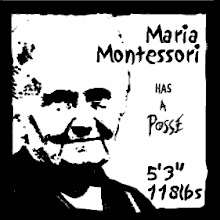children's books about civil rights and black history
Starting this week, I hope to post weekly children's booklists on a variety of topics. Although I find Amazon's customer produced lists to useful, I want to gather my own research here. I know there are some excellent civil rights teacher reference books out there, especially Putting the Movement Back into Civil Rights Teaching.
The difficulty is really the layers to the movement, the reality that while we've moved towards equality, we're not there yet. My own 1980s intergrated public schooling was full of "but now blacks and whites can be friends" social studies lessons and I don't want to see another generation grow up ignoring complex discussions of race, class and equality in the classroom. So, maybe some of these books will be useful in planning meaningful lessons.
Public School Integration
Through My Eyes by Ruby Bridges (ages 8-12)
Linda Brown, You Are Not Alone by Joyce Carol Thomas (ages 8-12)
Remember: The Journey to School Integration by Toni Morrison (ages 8+)
Days of Courage: The Little Rock Story by Richard Kelso (ages 9-12)
The Story of Ruby Bridges by Robert Coles (ages 4-8)
Civil Rights Movement
Freedom on the Menu: The Greensboro Sit-ins by Carol Weatherford (ages 4-8)
Speaking Out: The Civil Rights Movement 1950-1964 by Kevin Supples (ages 10-14)
Freedom School, Yes! by Amy Littlesugar (ages 4-8)
Freedom's Children: Young Civil Rights Activists Tell Their Own Stories
by Ellen Levine (ages 8+)
Let It Shine: Stories of Black Women Freedom Fighters by Andrea Davis Pinkney (ages 9-12)
Rosa Parks by Eloise Greenfield (ages 6-9, chapter book)
Rosa by Nikki Giovanni (age 7+)
Dear Mrs. Parks by Rosa Parks (ages 8-12)
If a Bus Could Talk : The Story of Rosa Parks by Faith Ringgold
...If You Lived at the Time of Dr. Martin Luther King by Ellen Levine (ages 8-12)
White Socks Only by Evelyn Coleman (ages 5-9)
Freedom Summer by Deborah Wiles (ages 5-9)
The Other Side by J. Woodson (ages 5-9)
Free at Last: A History of the Civil Rights Movement and Those Who Died in the Struggle by Sara Bullard (ages 10-15)
Witnesses to freedom :young people who fought for civil rights by Belinda Rochelle (ages 12+)
Celebrating African-American Lives
Langston's Train Ride by Robert Burleigh (ages 5+)
Alvin Ailey by A.D. Pinkney (ages 4-8)
Ella Fitzgerald: The Tale of a Vocal Virtuosa by Andrea D. Pinkney (ages 4-8)
When Marian Sang: The True Recital of Marian Anderson by Pam Ryan (ages 4-8)
Teammates: Jackie Robinson by Paul Golenbock (ages 6-12)
Thank You, Jackie Robinson by Barbara Coleman (ages 8-12)
Salt in His Shoes: Michael Jordan in Pursuit of a Dream by Delores Jordan (ages 4-8)
More Than Anything Else: Booker T. Washington by Marie Bradby (ages 5-9)
Surviving and Escaping Slavery
Aunt Harriet's Underground Railroad in the Sky by Faith Ringgold (ages 4-8)
Harriet and the Promise Land by Jacob Lawrence (ages 4-8)
From Slave Ship to Freedom Road by julius lester (ages 9-12)
To Be A Slave by Julius Lester (ages 9-12)
Allen Jay and the Underground Railroad by Marline Brill (ages 6-9)
The Daring Escape of Ellen Craft by Cathy Moore (ages 6-9)
Freedom River by Doreen Rappaport (ages 8-12)
No More!: Stories and Songs of Slave Resistance by Doreen Rappaport (ages 8-12)
Escape from Slavery: Five Journeys to Freedom by Doreen Rappaport (ages 10-14)
The Underground Railroad by Raymond Bial (ages 10-14)
Barefoot: Escape on the Underground Railroad by Pamela Duncan Edwards
Secrets of the Underground Railroad Quilts
Under the Quilt of Night by Deborah Hopkinson (ages 6-12)
Sweet Clara and the Freedom Quilt by Deborah Hopkinson (ages 6-12)
The Patchwork Path: A Quilt Map to Freedom by Bettye Stroud (age 6-12)
The Secret to Freedom by Marcia Vaughn (age 8-12)
To be edited with more goodies. Some added 1/21/06
Labels: book recommendations

